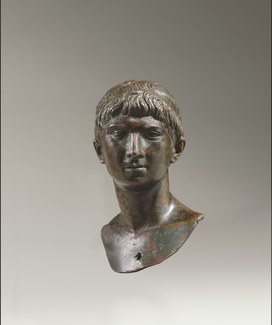Bust of Ptolemy of Mauretania

Miniature bronzes with depictions of the Ptolemies were certainly popular among the Greek elites. Relatively few examples survived antiquity, as bronze was commonly smelted and reused, but numerous ancient sources describe the increased production of prestige items—bronze statuettes but also cameos and gold medallions—that were decorated with the effigies, in Greek guise, of the ruling king and his spouse. Donated by the king to members of his court or to dignitaries from the rivaling Hellenistic kingdoms, they provided an effective and refined way to disseminate images of the ruler, inspire loyalty, and transmit propaganda.
Unearthed in the mid 19th century in the central square of Uppsala (Sweden) this bust of Ptolemy of Mauretania could have arrived to North Europe probably as part of Viking loot, or as one of the first collected antiquities in the late 17th century. The portrait did reflect the young king’s actual physiognomy, but rather it followed a highly codified repertoire of forms that idealized Ptolemy as a heroic youth, a type very common in Hellenistic and early Roman statuary.
A. Hahr. Beskrivning av Hedensberg I Svenska slott och herresäten. Västmanland, 1901. 11.
R.R.R. Smith. Hellenistic Royal Portraits. Oxford, 1988. 179, no. 129 (I).